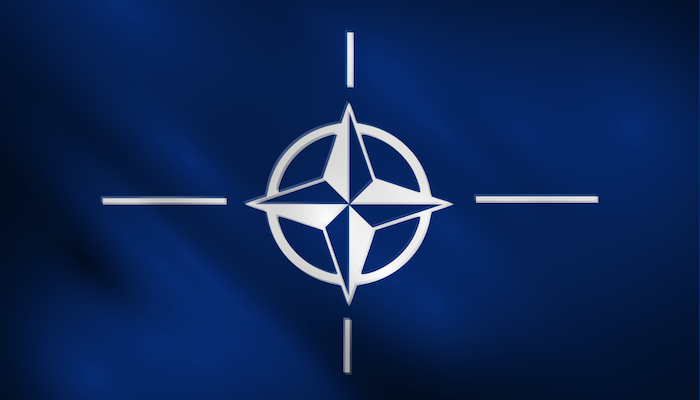
As the United States has started moving out of Afghanistan the area is fast becoming a much discussed topic with experts working on various alternate situations and scenarios that may prop up going forward. In parallel there are visible movements and actions on the ground all happening simultaneously.
NATO forces will leave Afghanistan in coordination with the American pullout slated to wrap up by Sept. 11, closing the book on nearly two decades of deployment after coalition forces ended the Taliban’s rule after the 9/11 attacks on the U.S. in 2001. The NATO deployment numbered around 10,000, including 2,500 American troops, according to a U.S. Department of Defense news report in April — down from a NATO-wide total of more than 100,000 in 2011. The U.S. Central Command announced in early June that it had completed more than 50% of the “retrograde process.”
Take the case of China for example. So far US and Nato forces were stationed in Afghanistan the chinese felt secured and with a good reason. Its western provinces share a border with Afghistan and have an easy approach . The situation in Xinjiang is known to everyone where the Uighur have been treated badly. No wonder then that the Chinese Embassy in Afghanistan last week urged its nationals to leave the country as the Taliban tightens its grip around the government in Kabul, having entered two provincial capitals in the north . Basically the root cause of worry for China and many other countries in the region including India is the power vacuum that will gast emerge in Afghanistan with various groups, countries and organizations each trying to outsmart one another in the race to capture and dominate the region.
Many fear a collapse echoing the fallout in the 1990s that followed the end of the Soviet war in Afghanistan. A collapse now could pose a threat for the region’s stability. Adding salt to the injury is the high stake and investments that many countries have ploughed in the region. Thus from a security point of view maintaining peace in the region is necessary for all and yet it will be difficult to achieve practically speaking. Let us take a quick view of some major stakeholders in the region starting from China.
China:
Until now China was not on the main chess board of Afghan politics. It kept herself in a mystical way aloof as the United States and Nato forces guarded the region. Analysts say Beijing has more or less been ambivalent about Afghanistan, but the vacuum left by the U.S. could require China to flex more diplomatic and interventionist muscle than it has typically displayed.
China has been engaging with the Taliban both directly and through both parties’ close relationship with Pakistan. Wary of its potential to harbor anti-Chinese extremist groups, it is unlikely Beijing will ever be entirely comfortable with the Taliban, but the pragmatic option may be to work with the group in the hopes of securing agreements to not harbor such extremists. [1]
The relationship with the Taliban could also give China an expanded influence in the region, where it has already established a major presence through its Belt and Road Initiative. The hopes for any BRI or other investments in Afghanistan in the near future are slim, but instability in Afghanistan could spillover into surrounding states where China does have ongoing projects. China is also meeting all the other three stakeholders in the region namely Afghanistan govt, Pakistan and Taliban leaders with meetings and discussions.
United States:
The United States has been in Afghanistan since 2001. NATO forces will leave Afghanistan in coordination with the American pullout slated to wrap up by Sept. 11, closing the book on nearly two decades of deployment after coalition forces ended the Taliban’s rule after the 9/11 attacks on the U.S. in 2001. The NATO deployment numbered around 10,000, including 2,500 American troops, according to a U.S. Department of Defense news report in April 2021 — down from a NATO-wide total of more than 100,000 in 2011.
Wary of leaving a security vacuum, the U.S. wants Muslim-majority Turkey, NATO’s second-largest army, to continue to provide security at Hamid Karzai International Airport after the NATO pullout. The U.S. is also encouraging Turkey to play a role in peace talks between the Afghan government and the Taliban by holding a high-level peace summit, complementing Qatari mediation efforts.
Turkish President Recep Tayyip Erdogan said after meeting with U.S. President Joe Biden on the sidelines of the NATO summit in Brussels this month that Turkey is open to such a task. He suggested enlisting the help of Pakistan, which has a clout with the Taliban that can reduce the risk of a confrontation. At the same time, Erdogan said that “it is not possible to ignore the fact of the Taliban.”
Rich Outzen, a former U.S. military officer and State Department policy planner who served as a military attache at the American Embassy in Kabul, told Nikkei Asia: “If Turkey and Pakistan agree to join hands, they can significantly contribute to the stability of Afghanistan and can secure the airport together, as Pakistan has influence over Taliban.”
Pakistan:-
One of the most important factors is Pakistan by virtue of its double hand dealings with the United States and Taliban at the same time. Now it’s hobnobbing with Turkey and China as well. However Pakistan is also bruised in the process. Even before the withdrawal began, instability in Pakistan has steadily increased. The outlawed militant group Pakistani Taliban, known as Tehreek e-Taliban Pakistan (TTP), has taken advantage of the situation and increased cross-border attacks in Pakistan. Last month (May 2021) Chinese Ambassador Nong Rong barely survived a suicide attack by TTP in Quetta. Last week, the group killed nine security personnel in multiple attacks near the Pakistan-Afghan border.
Militancy analyst Fakhar Kakakhel believes the U.S. withdrawal coupled with a weak government in Kabul will seriously destabilize the region. “In future, TTP will have more safe pockets in regions close to Pakistani borders,” Kakakhel told Nikkei Asia. Taliban members from Afghanistan and Pakistan allegedly use the border region as a sanctuary. Both groups are believed to operate separately but maintain close ties.
Amongst all, Pakistan is the country to be watched most as it will play the monkey game with all involved. It will try to show its usefulness to China as well as the United States and will try to bargain most in the process. If the situation deteriorates, the US and China will be forced to support Pakistan. However it will also lead to instability in Pakistan too.
Turkey:
This year’s Antalya Diplomacy Forum, held between Friday and Sunday, became a venue for Afghanistan’s neighbors, regional actors and mediators, including ministers from Turkey, Iran, Pakistan and Qatar, to discuss what comes after the NATO pullout.
Taliban spokesman Suhail Shaheen told Reuters on June 10: “Turkey was part of NATO forces in the past 20 years, so as such, they should withdraw from Afghanistan on the basis of the agreement we signed with the U.S. on 29th Feb. 2020.” “Otherwise, Turkey is a great Islamic country. Afghanistan has had historical relations with it. We hope to have close and good relations with them as a new Islamic government is established in the country in future,” the spokesman said.
Turkish troops have been in Afghanistan for nearly two decades for strictly non combat missions, such as training Afghan forces, building local infrastructure and securing airport facilities. Turkey enjoys support from local Uzbek and Tajik populations, which share common Turkic roots. “If the security threat level of Syria’s Idlib is 1 and Libya is 10, then Afghanistan is a thousand,” one expert has warned, comparing Afghanistan with other military theaters where Turkey is engaged.
The ambitious plan of president Erdogen to play a bigger role in international affairs fits perfectly with the US withdrawal.
Afghanistan:
The most important nation among all whose soil is now being used for regional hegemony and dominance in the region undermining the country’s right for peace and prosperity. As the United States will depart Afghanistan will feel and bear the maximum pinch for obvious reasons. The Afghanistan government has not minced words in criticizing the removal of US / Nato army deployment from the region. No doubt the Afghan govt is the most worried country amongst all and it will be difficult to predict the future and destiny of the country and its leaders going forward.
Iran:
Though Iran shares a border with Afghanistan it is not in the picture directly. It will be interesting to keep a watch on this country too as it is one of the major forces in the region and is an actor in the Syrian/Iraq conflict that has destabilized the area.
India:-
No where in the picture . But we share a boundary with Afghanistan along with Pakistan. Any involvement of China, Turkey and Pakistan nexus in the region will be highly dangerous for our own security.
References:
[1] https://asia.nikkei.com/Politics/International-relations/As-US-exits-Afghanistan-China-prepares-for-threat-of-security-void
[2] https://asia.nikkei.com/Editor-s-Picks/Interview/NATO-exit-risks-Afghan-security-vacuum-Abdullah-Abdullah
Dr. Asheesh Shah
Samanvaya.


